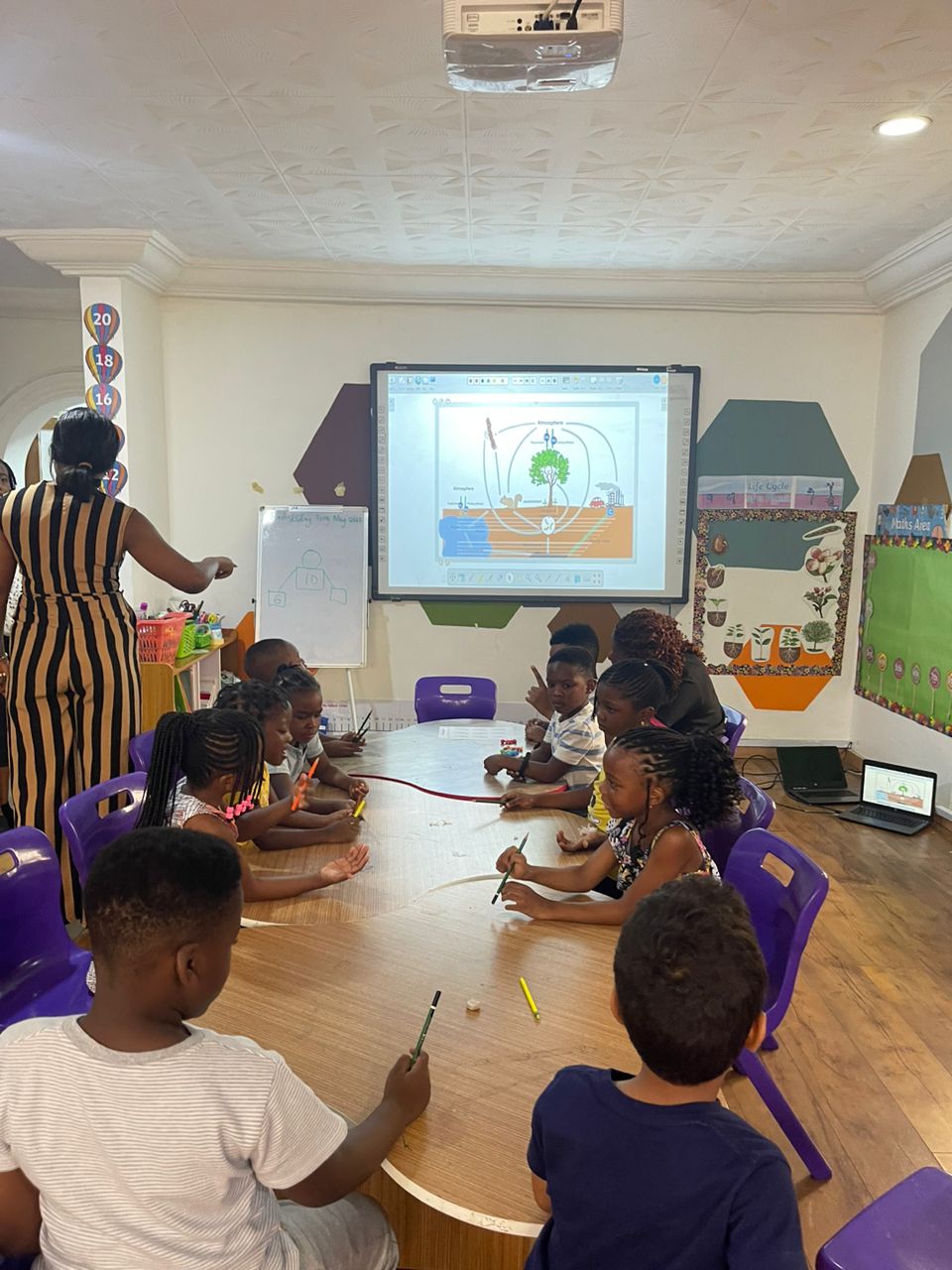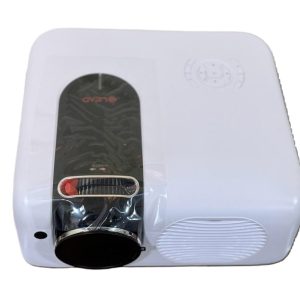What you need to know about smart classrooms

The term “smart school” refers to educational institutions that make use of technology to enhance the user experience of learning by making the educational process as interactive, engaging, and time-efficient as feasible. The vast majority of schools in today’s society, particularly private schools, are moving toward the adoption of the most recent technology to enhance their educational system and produce smart graduates. As technology is becoming the foundation for every activity and every aspect of human life, the majority of private school owners in Nigeria are also thinking in this direction at present.
To establish a smart school, the following is a breakdown of how these schools function, as well as the equipment that is required.
Key characteristics of smart classrooms and schools include the following:
1. Smart classrooms make use of interactive boards, tablets, and software to make learning more exciting and engaging for students. This is accomplished through the utilization of learning through interaction. Lessons may be given in a multimedia style, comments can be made in real-time, and interactive quizzes and polls can be administered. All of these features are possible.
2. Students can efficiently collaborate on tasks by using a variety of digital devices, which is referred to as collaborative learning.
Sharing papers, participating in online discussion forums, and attending virtual classrooms are all ways that make it simpler for students to work together on assignments and learn from one another.
3. “Personalized Learning”: Due to technological advancements, it is now possible to create tailored lesson plans for each student, taking into account the distinctive needs of each student.
Activities and assessments may be tailored to each student via the use of adaptive learning software.
4. Accessibility: By incorporating technologies such as speech-to-text, translation, and closed captioning, smart classrooms can cater to a broad variety of educational requirements.
Because of the benefits of remote learning, students can receive their education from anywhere, regardless of where they are located.
5. With the use of data-driven insights, educators can monitor the development of their pupils in real time.
It is possible to find areas where students might need additional encouragement and support by using the analytics that learning management systems (LMS) make available.
To establish a smart school, the following essential equipment is required:
The hardware:
1. First and foremost on my list is the concept of interactive whiteboards, which are often referred to as smart boards. These are sizable touch-sensitive panels that can connect to a computer and projector or, in the case of a flat interactive panel, directly to your personal computer using HDMI cables or a wireless connection. The use of interactive boards gives teachers the ability to show and interact with the students and the content that they are learning.
2. High-definition projectors: These projectors are used to display content that is transferred from a computer onto a screen. It is possible to use it in conjunction with smart boards to enhance interactive learning. Alternatively, flat panels (which do not need a multimedia projector to work) may be used in this manner.
3. Document cameras: These are cameras that can project documents, books, and other physical things onto a screen. Document cameras are sometimes referred to as “document cameras.” They contribute to the presentation of detailed graphics and the execution of demonstrations.
4: Audio system: To ensure that all students have access to high-quality audio, audio systems consist of microphones, speakers, speakerphones, and amplifiers. These solutions are crucial for classes that have a greater number of pupils as well as for learning that takes place in distantly located locations.
5. Wireless Internet connection: A high-speed wireless internet connection is available in each room in the boarding school.
This ensures that all devices can connect to the internet reliably.
6. Charging stations: These may be either carts or stations that are designed to charge electronic devices such as laptops and tablets. This ensures that the devices are always accessible for usage and may be utilized whenever they like.
7: Interactive Response System: Students are allowed to respond to questions in real time via the use of interactive response systems, which may be in the form of clickers or mobile apps. It assists in providing users with rapid feedback and engages them.
8. The digital podium: also known as an e-podium, is a device that can be categorized as an audiovisual system. It is equipped with a touch screen that measures 21.5 inches and an integrated audio system that is wirelessly connected. This allows the instructor or facilitator to present their lessons from the podium to the interactive board without obstructing the students’ line of sight.
9. Video Capture Device: The advantage of this device is that it transforms the analogue video signals that a video camera creates into a digital format. This device is also known as a video card. The process of producing data results in the development of a digital video stream, which may be easily stored or played again at a later time. The establishment of this modified format makes it possible to live broadcast lectures, record them as a computer file, play them again at a later time, or display them on a video display device.
10. Camera: If you want to include virtual courses in your smart school project, this is one of the essential technologies that you will need to have. In the course of video conferencing sessions or virtual classrooms, it is intended to record and transmit video of a high quality. These cameras are often used in a variety of settings, including but not limited to corporate meetings, educational contexts, telehealth consultations, and other circumstances that demand face-to-face communication regardless of the distance involved.
11: 3D printers: the use of 3D printers in STEM education is a beneficial tool because they allow students to more easily create prototypes and models based on their ideas. Facilitates learning experiences that include practical application of knowledge.
Software:
1. Google Classroom, Blackboard, and Moodle: Some examples of platforms that are available are Google Classroom, Blackboard, and Moodle. Learning management systems, sometimes referred to as LMS, are also sometimes used. Take care of the material that will be covered in the class, keep track of how the students are progressing, and make communication possible.
2. Khan Academy, Quizlet, and Duolingo are examples of the kinds of educational programs and tools that fall under the second category. This category encompasses a broad variety of apps that cover a wide range of subjects.
The provision of interesting content and the provision of practice assignments are both ways to encourage learning.
3. The video conferencing software known as Zoom, Microsoft Teams, and Google Meet are all instances of such applications. Thirdly, there is an increased availability of tools.
Through the use of virtual classrooms, encourage students to learn from a distance.
4. The term “digital textbooks and resources” refers to various online resources and electronic publications that may be utilized in place of conventional textbooks or in addition to them.
5. Applications such as Google Docs, Microsoft Office 365, and Trello are included in the fifth category of platforms that facilitate collaboration.
Assist in the management of projects and activities that involve groups of people.
Oversight of the Classroom Management:
The software that is referred to as attendance and grading software is software that enables the administration of grades as well as the recording of attendance.
reports and statistics that are generated automatically for the airport selections that classroom instructors make.
Security systems consist of a variety of components, including surveillance cameras and access control systems. These systems, intended to ensure their safety and security, protect both teachers and students.
Follow these procedures before putting the plan into action:
1. Analyze the current state of technology and pinpoint areas that may stand to benefit from further development. The process of determining the needs of the organization begins with this phase.
It is important to take into consideration the needs of the students, the teachers, and the administration.
2. The process of budgeting and planning begins with the second phase, which is the creation of a budget for the purchase and installation of equipment. Make the necessary arrangements for ongoing training and maintenance to be carried out.
3. The third step is to establish the appropriate infrastructure. Ensure that the institution has a dependable internet connection as well as a suitable electrical infrastructure.
Installing the right equipment, which may include audio systems, projectors, and interactive boards, is an essential step in meeting the requirements.
4. Train both the teaching staff and the administrative workers on how to make use of the most recent technology breakthroughs. This is part of the training and professional development program. To keep up with the changes in technology, continuous professional growth is required.
5. Construct a Learning Management System (LMS) in addition to other educational software. This is the fifth step in the software integration process.
Make certain that both the convenience of use and the compatibility with the systems that are already in place are there.
6. To get started, set up a test program in a few different classes. When it comes to the procedure, this is the sixth phase. Collecting input and making any necessary modifications before a full launch is a vital step to take.
7. Distribute the technology to every classroom to finish the implementation process. Keep an eye on how it is being utilized and how effective it is, and make adjustments to it as necessary.
8. Evaluation and the Provision of Feedback: Regularly, examine the impact that the technology has on the results of the learning process.
To continue making progress, it is necessary to collect the feedback of both the students and the teachers.
The use of smart classrooms, which fundamentally revolutionize the educational experience, makes it possible to engage in learning that is personalized, interactive, and collaborative. For the purpose of establishing a smart school, it is essential to engage in careful planning, make investments in the proper equipment, and offer instructors ongoing training. Because of the use of these technologies, educational institutions can enhance the overall quality of teaching and better prepare students for the future.
Lead Technology Innovation has been instrumental in assisting a large number of private institutions and government agencies, such as the Universal Basic Education Commission (UBEC), in the establishment of smart schools in several Nigerian states. In order to provide you with further information and enable you to have a better knowledge of what you need in order to establish a smart school, we provide free consulting and evaluation services for both privately owned and publicly owned schools, focusing on what is appropriate for your current state.

 Multimedia Projector
Multimedia Projector Video Conferencing Solution
Video Conferencing Solution